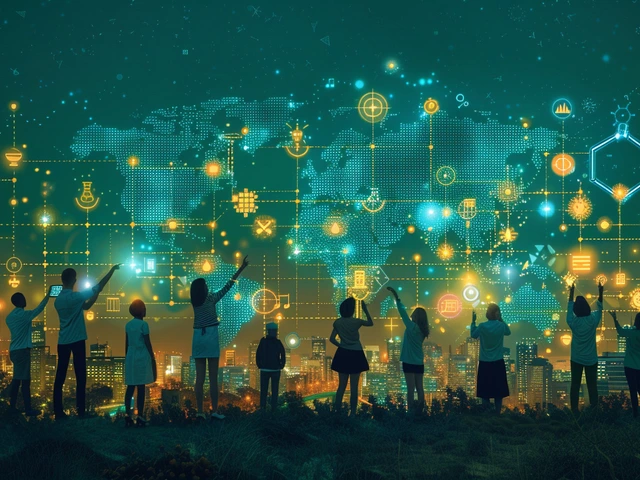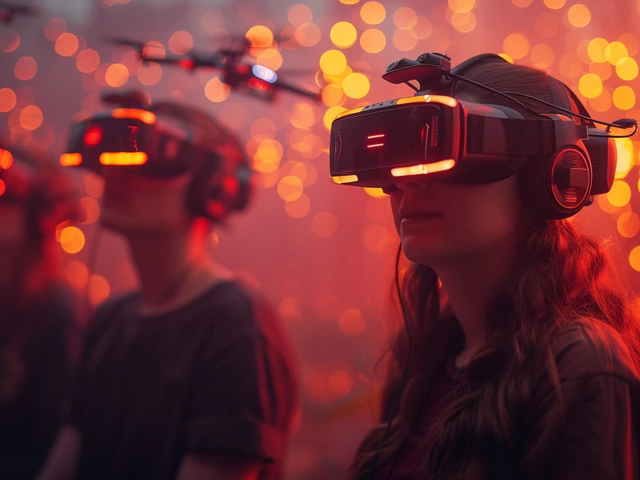Artificial Intelligence: A New Hope for Wildlife Conservation

Artificial Intelligence: A New Hope for Wildlife Conservation
The Dawn of Innovation in Conservation
Boy, it sounds like a sci-fi thriller title, doesn't it? "The Dawn of Innovation in Conservation!" Now hold onto your seats as we delve into a thrilling journey of technology, specifically artificial intelligence's role in wildlife conservation. If you had told me a decade ago that machines learning and interpreting information on their own would be the front-runners in protecting our wildlife, I might have raised an eyebrow or two. But here we are!
Just last weekend Darrin, the hubby, and I were having quite the conversation about AI's role in conservation. Honestly, the man was always the techie between us. It was a warm lazy Sunday, and as Darrin rattled on about how AI could mimic human intelligence, I couldn't help but stare at the kookaburras in our garden. Suddenly, I found myself compelled to write about how these two seemingly disparate worlds could intersect. So, here we go, your friendly neighbourhood blogger taking you on a journey to an innovative future.
Enter Artificial Intelligence
Busting onto the technological scene like an action hero, artificial intelligence isn't a new concept. Since the 1950s, when the term was coined, AI has slowly but steadily seeped into all aspects of our lives. From voice-activated personal assistants to smart vacuum cleaners, AI has indeed made inroads into our day-to-day lives.
But what if I told you it goes beyond cleaning your house or telling you the weather? Yes, artificial intelligence isn't just making our lives easier; it's also inching towards making the world a better place. This brings me to the incredibly noble and equally challenging task of wildlife conservation.
Distress Signal: The Rapid Decline of Wildlife
For a moment, let's step away from Melbourne's cityscape and transport ourselves into the vast wilderness. Surrounded by the hum of insects, the rustle of leaves, and the numerous unidentifiable sounds, it's a different world out there. Yet, every wildlife species, big or small, is a precious building block that supports and maintains the balance of our ecosystems.
Imagine my heartbreak, then, when I learnt that we've lost nearly 60% of wildlife populations in just a little over four decades. No, this isn't some melodramatic piece of fiction. It's a grim reality presented by the Living Planet Report 2020. It's a 'Bat Signal' of sorts for the Earth, and it's time we stepped up!
Joining the Dots: AI and Wildlife Conservation
You may be wondering how on earth are we going to connect these dots. Well, let's start with understanding conservation itself. In simple terms, it's about protecting our natural resources. And who better to lend a hand in this crucial mission than our techological R2-D2s or Wall-Es?
From tracking animal movement to monitoring their population, AI is becoming critical in wildlife conservation efforts. It presents a unique opportunity by offering solutions that are not only efficient, but also scalable. Who would've thought that those smartphone snaps of kangaroos' journey through suburban Melbourne could aid in their conservation!
A Tweet or a Squawk? Decoding Animal Sounds
Ever found yourself intrigued by the sounds of critters around you? As someone perpetually curious about our feathery and furry friends, I sure have - even tried to mimic a few. Little Madeline and Isaac still chuckle remembering my first attempt at a cockatoo's squawk. Where my skills fell short, AI steps in with precise listening and decoding systems.
Sound recognition algorithms can track specific animal sounds, giving researchers insight into their population, location, and behaviour. From elephant rumbles to bird songs, AI lends our ears a superhuman ability to understand the complex language of wildlife. So the next time you hear a birdie tweet, rest assured some tech ally might be decoding their RSPVs - or rather, RSPBs!
Popping the 'Tech' Bubble: Streamlined Data Management
AI's magic doesn't end at understanding wildlife speak, it stretches to data collection and analysis as well. Organizing information has historically been a plague for conservationists. The sheer volume of data collected from field studies can appear like a monstrous task. Now imagine AI stepping in like a savvy secretary, efficiently organizing, sorting, and streamlining complex data. Heaven, isn't it?
This also helps in constantly monitoring and keeping track of any changes in wildlife habits, movements, or numbers. Suddenly, massive databases of information don't seem so overwhelming, do they? You'd be glad to know that even Red Riding Hood's antagonist, the Big Bad Wolf, appreciates AI's diligent data management helping his pack in the wild!
Eye in the Sky: Drones and Wildlife Conservation
Now, we're getting to the good stuff: drones! I remember Darrin's fascination when he got his first drone. It was a revelation that these unmanned flying gadgets could offer so much more than just epic wedding photos. Turns out, they can be a guardian angel for wildlife, providing an effective bird's eye view of various animal habitats.
Drones integrated with advanced AI technologies can maneuver even in inaccessible areas and capture critical information about wildlife. Plus, think about the reduction in human intrusion in their habitats. It's like giving Bambi's forest its privacy back!
On a Personal Note: Impact on Future Generations
Going through all these amazing breakthroughs, I can't help but think about the world we'll leave our children. Madeline and Isaac deserve to remember kangaroos as more than just cute illustrations in their storybooks. Remember that lingering conversation Darrin and I had? It's not just about adults brainstorming over cups of coffee. It's about ensuring our kids get a chance to coexist with wild wonders in harmony.
These might be early days in understanding artificial intelligence's potential in wildlife conservation, yet its promise is undeniable. From decoding animal sounds to keeping a vigilant eye through drones, AI adds a powerful tool to the arsenal of conservationists. As a blogger, a mother, and a lover of all things wild, I can't help but cheer this technological crusader in wildlife conservation. So, in the spirit of Star Wars, may the tech be with you and our beloved wildlife!
About
CH Tech Development is a premier resource for the latest updates and insights in the world of technology development. We provide extensive information, articles, and guides on cutting-edge technological advancements. Explore our site to empower your knowledge about the dynamic field of tech development.
Latest Posts


Why Coding Skills are the New Standard of Literacy
By Larissa Bentley Oct 19, 2023

Mastering PHP: Essential Tips and Tricks for Dynamic Website Development
By Theodore Worth Feb 22, 2024

Programming Faster: The Ultimate Skill for Successful Coders
By Silas Hawthorne Jul 26, 2023

Write a comment